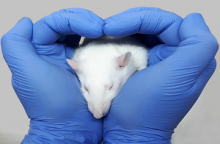- About us
- Research
- Students & Teaching
- Seminars & Events
- Directories
- Booking Rooms & Equipment
- עברית
Home » Prof. Marshall Devor suggests a new mechanism underlying general anaesthesia
General anesthesia is a human invention that allows us to undergo medical procedures that otherwise would involve great pain, such as a surgery, without feeling any discomfort. But what do we know about how general anesthesia actually works?
It is widely held that anesthetic molecules introduced into the blood stream by injection or through inhalation are spread evenly throughout the nervous system. When these molecules reach the brain loci that are responsible for the different aspects of anesthesia: – analgesia, loss of muscle tone, loss of memory formation and unconsciousness, – they act locally to inhibit these functions and bring about a state of general anesthesia. A competing hypothesis, however, posits that despite the widespread distribution of anesthetic agents and their receptors, anesthetic induction is not due to concurrent receptor binding at widely scattered brain locations, but rather to a primary action at one or a small number of specific locations within the sleep/arousal circuitry. A prominent candidate among these is the MPTA (mesopontine tegmental anesthesia area), a locus in the brainstem discovered in rats and presumably present also in humans. A minute quantity of an anesthetic agent called pentobarbital, when injected directly into the MPTA, is sufficient to put the animal into an anesthesia-like state. This is 1/4000 of the dose that would need to be given via the bloodstream. Destruction of the locus, on the other hand, renders the animal unresponsive to the clinically used doses of anesthesia given systemically.
Our more recent research has shown that a localized lesion of the MPTA changes the response of the rats to some anesthetic agents, but not all. Drugs that act through a receptor for the neurotransmitter GABA were found to lose much of their potency when delivered to the bloodstream after lesioning the MPTA. However, anesthetic drugs that act on receptors for neurotransmitters other than GABA, such noradrenalin and glutamate, did not lose their potency.
The main conclusion of the research is that general anesthetic agents, at least the ones that mimic the neurotransmitter GABA, at least, apparently do not act at widely distributed locations in the brain. Rather, at clinically relevant doses they appear to act at a focal brainstem location, the MPTA. Here they secondary recruit dedicated executive pathways that reach and influence the activity of numerous distant brain areas and implement anesthesia, including loss-of-consciounessconsciousness. From this viewpoint, anesthesia is a medical invention whereby an evolutionarily adaptive network dedicated to executing brain-state transitions is pharmacologically co-opted to permit pain-free surgery.
Read the paper - https://www.ncbi.nlm.nih.gov/pubmed/31850942
